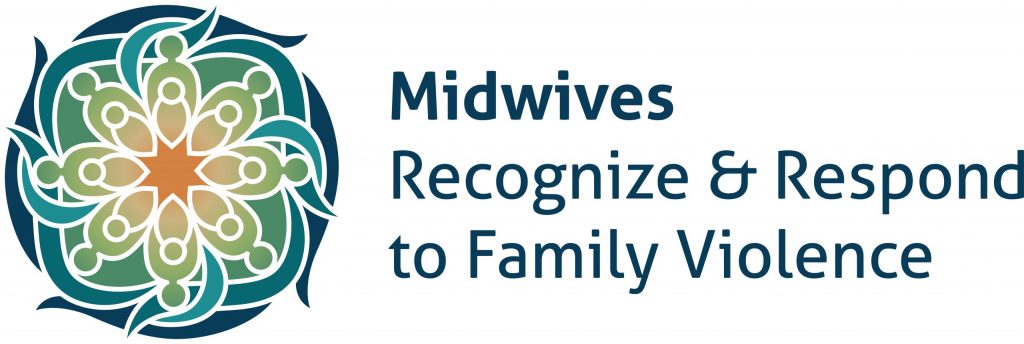
Resource Toolkit
The Midwives Recognize & Respond to Family Violence Resource Toolkit includes tip sheets, tools, backgrounders and scenarios to support learning and practice of trauma-informed care. These quick guides can be used as stand-alone resources or with other related resources in the toolkit.
Tip Sheets
How-to resources on recognizing and responding to family violence.
- Recognizing & Responding to Family Violence
- Asking About Intimate Partner Violence & Children’s Exposure to Intimate Partner Violence (IPV)
- Assessing the Immediate Risk of Violence
- Follow-Up Protocols (Infographics)
- Documentation Guidelines
- Home Visit Risk Assessment (Infographic)
- Home Visit Safety Planning (Infographic)
Practical Tools
Practical templates, checklists and contacts to use in-clinic to address client needs.
Backgrounders
Clinician tear sheets to deepen understanding of perinatal safety planning, safety protocols for home visits, as well as child maltreatment and the duty to report (forthcoming).
Learning Scenarios
Educational scenarios to encourage midwife self-reflection and group discussion on disclosures and reporting family violence.
Tip Sheets
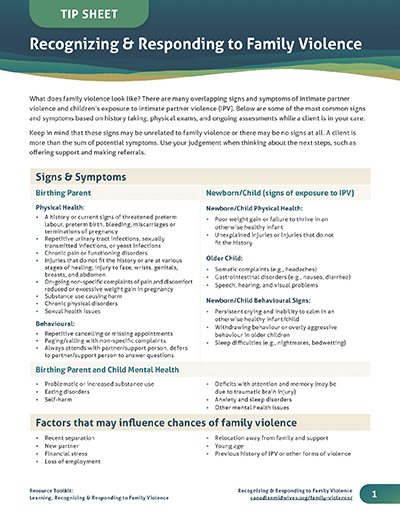
Recognizing & Responding to Family Violence
What does family violence look like? There are many overlapping signs and symptoms of intimate partner violence and children’s exposure to intimate partner violence (IPV). This tip sheet presents some of the most common signs and symptoms based on history taking, physical exams, and ongoing assessments while a client is in your care.
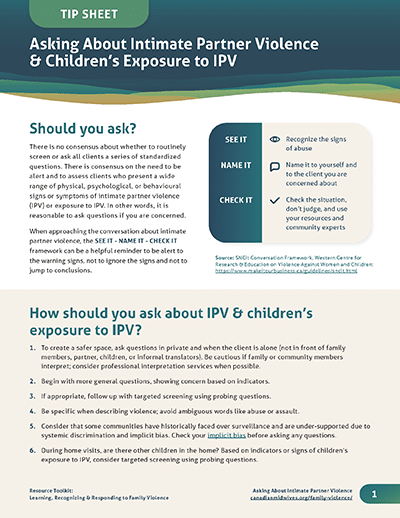
Asking About Intimate Partner Violence & Children’s Exposure to Intimate Partner Violence
It is reasonable to ask questions if you are concerned about violence. This tip sheet provides a framework for approaching a conversation about IPV and children’s exposure to IPV and includes a series of sample questions to guide your conversations.
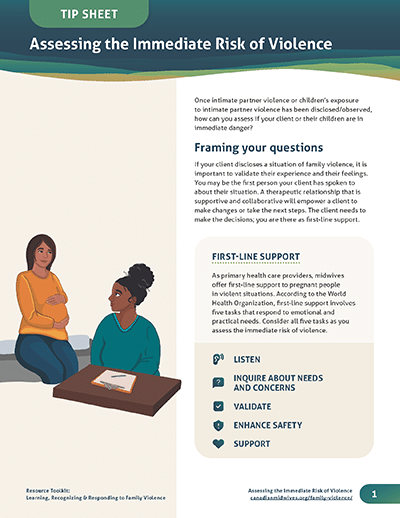
Assessing the Immediate Risk of Violence
Once intimate partner violence or children’s exposure to intimate partner violence has been disclosed/observed, how can you assess if your client or their children are in immediate danger? This tip sheet provides a framework for approaching a conversation with your client. It also includes a series of sample questions and key reminders about your role as a midwife in supporting clients experiencing violence.
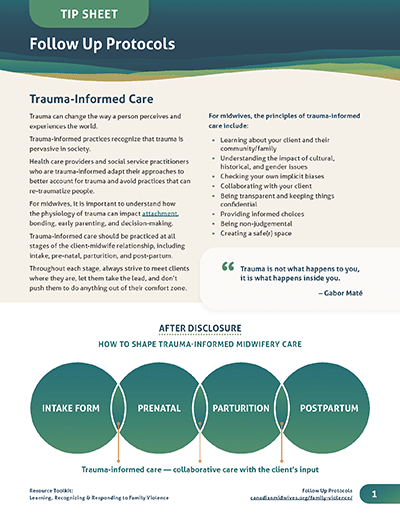
Follow-Up Protocols
What do you do after a client discloses abuse? How can you mitigate harm? There are three key things to consider: practicing trauma-informed care; understanding the midwife/client relationship; making appropriate referrals. This tip sheet provides an overview of each consideration from a client-centred perspective.
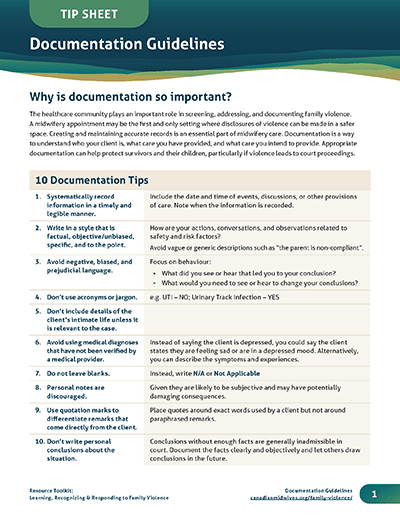
Documentation Guidelines
Documentation is a way to understand who your client is, what care you have provided, and what care you intend to provide. Appropriate documentation can help protect survivors and their children, particularly if violence leads to court proceedings. This tip sheet provides practical tips on documentation and how to prepare for mandatory or legal disclosures.
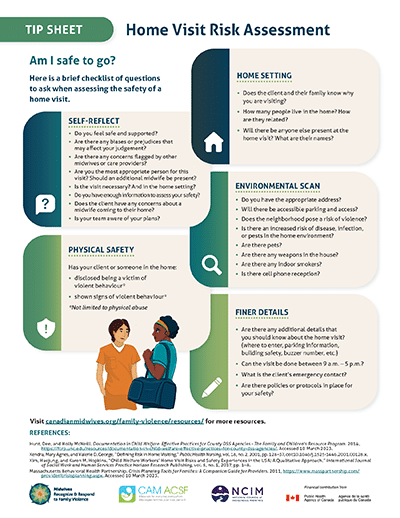
Home Visit Risk Assessment
Am I safe to go? This infographic provides a checklist of questions to ask when assessing the safety of a home visit. It includes questions about self-reflection, physical safety, the home setting and the surrounding environment.
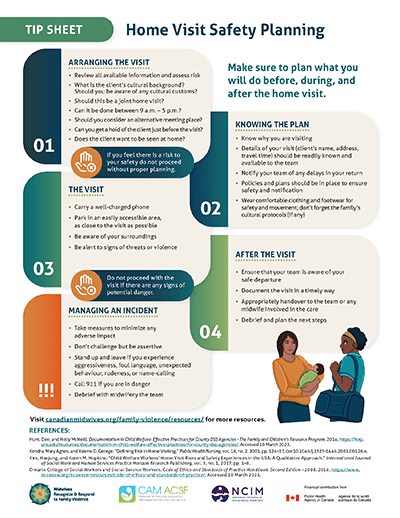
Home Visit Safety Planning
Home visits require planning. This infographic provides a checklist of things you can do when arranging a visit, as well as during and after a visit. It also provides tips on managing incidents.
Practical Tools
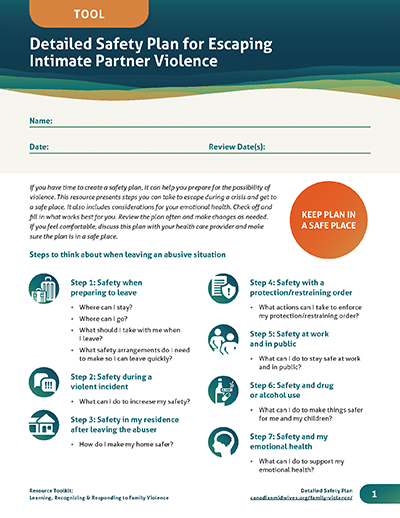
Detailed Safety Plan for Escaping IPV
This template presents steps clients can take to escape during a crisis and get to a safe place. Each step includes a checklist of strategies, actions or prompts to guide planning for safety. The plan should be reviewed often, kept in a safe place and discussed with a healthcare provider if appropriate.
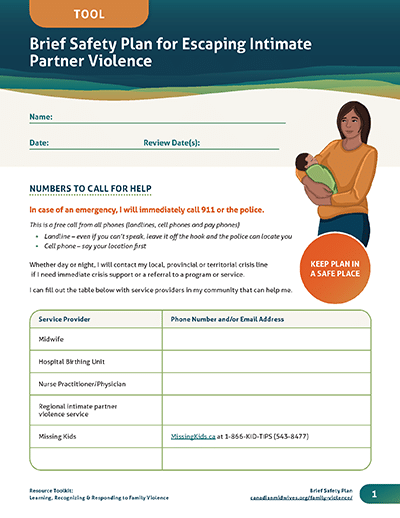
Brief Safety Plan for Escaping IPV
This template outlines key things to think about when planning for safety: numbers to call for help, steps to think about when leaving an abusive situation, and a checklist of things to take when leaving (if possible).
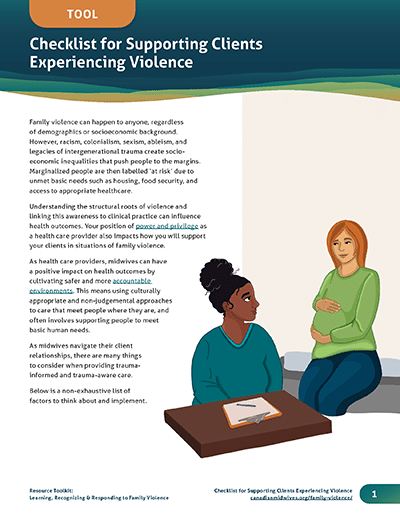
Checklist for Supporting Clients Experiencing Violence
As midwives navigate their client relationships, there are many things to consider when providing trauma-informed and trauma-aware care. This tool provides a non-exhaustive list of factors to think about and implement. This includes tips for safety, relationship-building, self-care and collaboration; providing culturally aware care; and supporting clients to meet their basic human needs.

Help Line Safety Poster (customizable)
Intended as a bathroom poster to be used by clinics, this writable PDF provides space for clinics to fill in their local phone numbers for crisis lines, anti-violence prevention services and other helpful services.
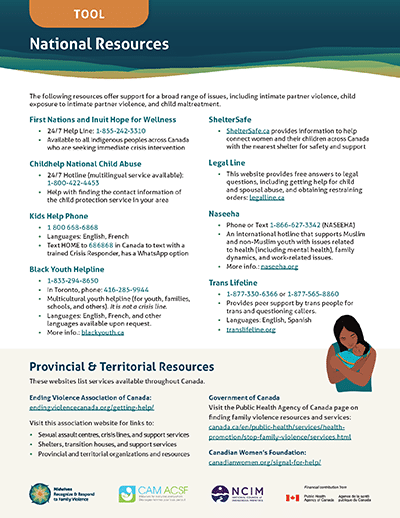
National Resources
When making referrals, you may want to consider community-based national resources, as well as provincial and territorial resources that offer support for a broad range of issues, including intimate partner violence, child exposure to intimate partner violence, and child maltreatment.
Backgrounders
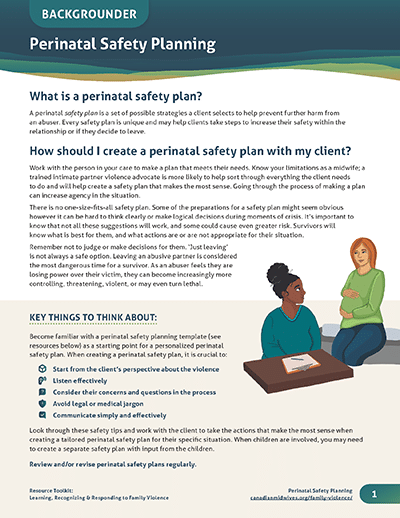
Perinatal Safety Planning
A perinatal safety plan is a set of possible strategies a client selects to help prevent further harm from an abuser. Every safety plan is unique. This backgrounder introduces you to how to create a plan that meets clients’ needs, whether taking steps to increase safety within the relationship or deciding to leave.
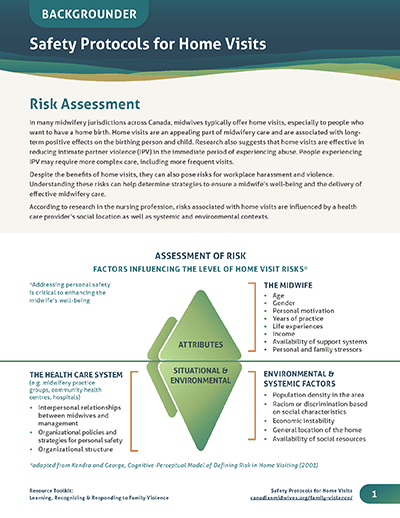
Safety Protocols for Home Visits
Despite the benefits of home visits, they can also pose risks for workplace harassment and violence. This backgrounder presents factors that influence the risks of home visits. It also outlines considerations for culturally appropriate strategies to ensure a midwife’s well-being and the delivery of effective midwifery care.
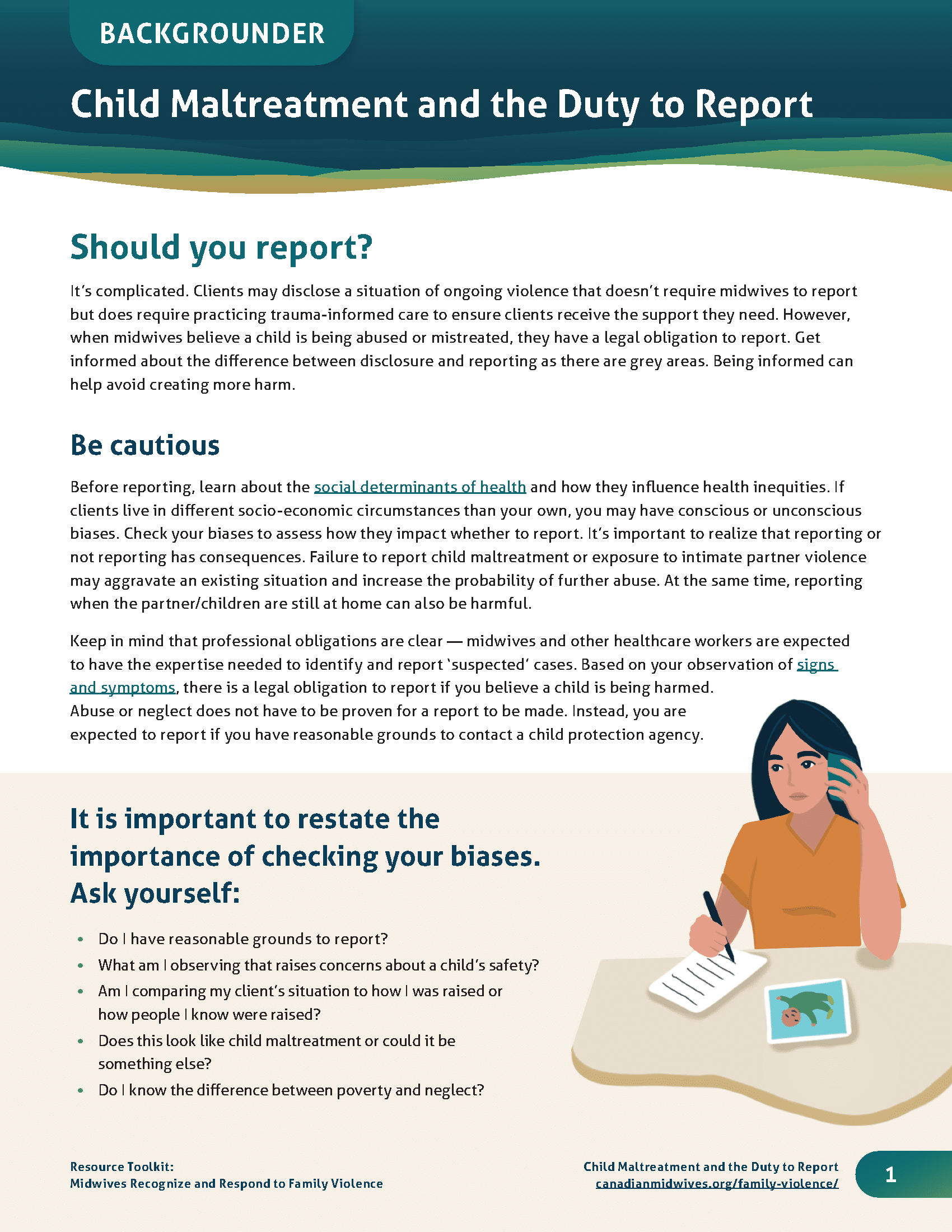
Child Maltreatment and the Duty to Report
Clients may disclose a situation of ongoing violence that doesn’t require midwives to report but does require practicing trauma-informed care to ensure clients receive the support they need. However, when midwives believe a child is being abused or mistreated, they have a legal obligation to report. Get informed about the difference between disclosure and reporting as there are grey areas. Being informed can help avoid creating more harm.
Learning Scenarios
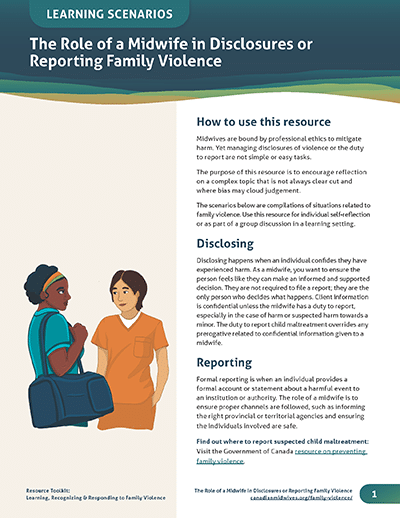
A Midwife’s Role in Disclosing or Reporting Family Violence
The purpose of this resource is to encourage reflection on complex topics that are not always clear cut and where bias may cloud judgement. The learning scenarios are compilations of situations related to family violence. Use this resource for individual self-reflection or in a group learning setting.